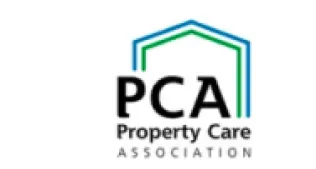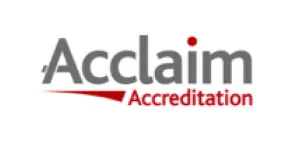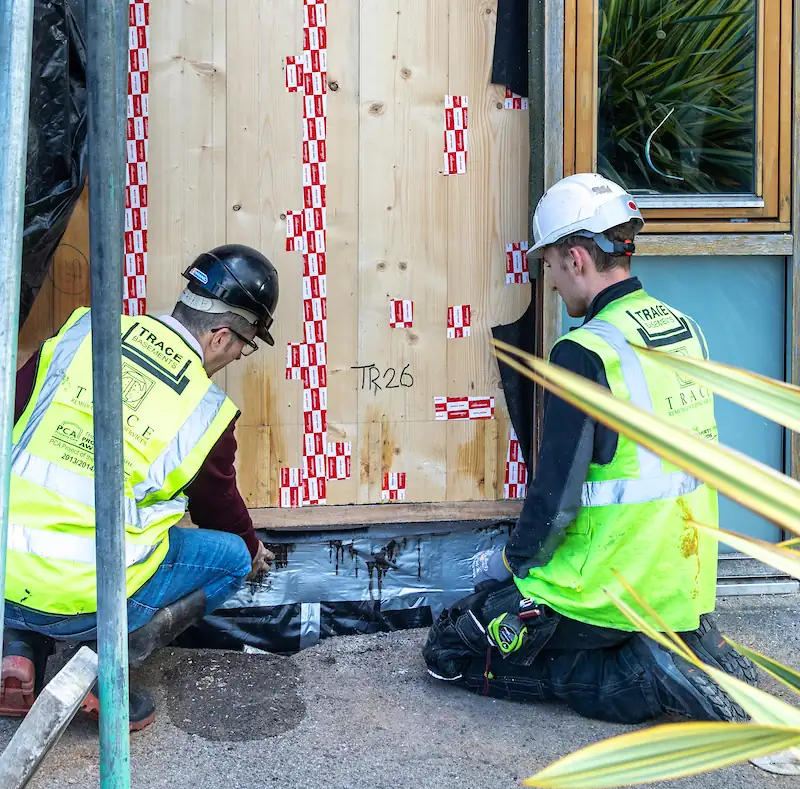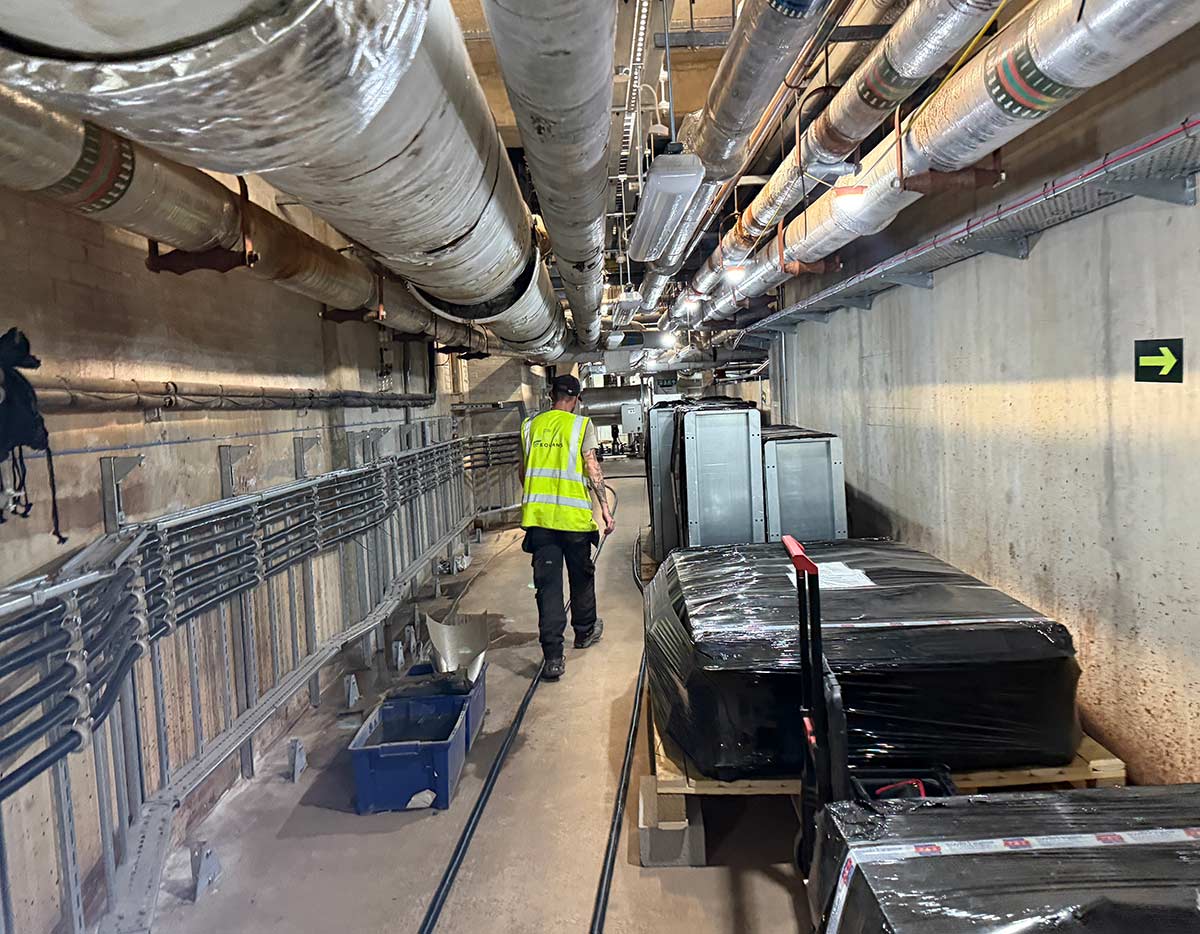ICF Basement Waterproofing
Get in touch

As specialist waterproofing designers and installers, Trace are ideally placed to advise on and protect ICF basement structures, which require a specific combination of measures to achieve a successful outcome.
ICF Basements and Waterproofing Design
A thorough understanding of structure, is key to successful waterproofing. Trace appreciate the intricacies of Insulated Concrete Formwork (ICF), and how to waterproof ICF basement structures effectively.
Dealing with basements formed in ICF
A proportion of our experience in dealing with basements formed in ICF, has unfortunately been in remedying issues, where it has simply been considered that a single form of waterproofing, or combination of two forms of waterproofing is sufficient to address all site conditions. This is not the case, Trace will consider your site appropriately, to facilitate the right design.
Trace will design, install, guarantee, insure and maintain your waterproofing.

BS8102
The principal design guide employed for basement waterproofing in the UK and particularly relevant to new construction. Trace were one of only two UK Contractors serving on the update panel for the 2022 revision of the British Standard.
BS8102 4.2 Design Team
Trace support project design teams by fulfilling the role of the Waterproofing Specialist and Waterproofing Designer (as per BS8102 section 4.2). Our designers produce proposals back by our £2.5m professional indemnity insurance, avoiding split liabilities where we install.
Qualified and Experienced
Trace's Designers all hold CSSW, Furthermore a CSSW examiner, a PCA registered Waterproofing Design Specialist (also vets candidates seeking to join that register). MRICS Chartered Surveyor - winner of CSSW award for highest exam marks. Designers include ex RAF Tornado propulsion & Navy Nuclear submariner Engineers.
Effective Waterproofing of ICF Basements
ICF structures have many benefits, and can be employed to form basements, but the accepted industry design guidance (BS8102) is that they can provide inherently higher risk structures from a waterproofing perspective. Why is this and what can be done about it?
BS8102 Guidance for ICF Basement Waterproofing
Two extracts from BS8102 (2022) concerning ICF, and other forms of potentially higher risk structure:
5.1.3 Water table classification in relation to the structure
NOTE 2 The type of structure can inherently raise the risk, e.g. blockwork construction below ground level, due to number of joints within these forms of construction.
Modular systems, such as twin wall and insulated concrete formwork (ICF) construction should be deemed inherently high risk. See 4.3.2.
11 Remedial measures
Composite and modular structures, such as precast and twin wall, and certainly masonry, beam and block and ICF, have increased risk of failure and are potentially difficult to repair so remediation can be extensive and costly.
The Right Way to Approach Waterproofing for ICF
To understand how best to waterproof such structures, we need to consider a number of aspects, which we detail below:
There are three forms of waterproofing which can be employed (or combined) within any below ground structure.
Type A tanking – a barrier material is installed to block water out.
Type B integrally waterproof structure – the structure itself provides the barrier to block water out.
Type C cavity drainage – a water management system, any penetrating water is continuously collected and removed, whilst being isolated from the interior by internal cavity membrane linings.
The ability to block water out (type A & B waterproofing) is influenced by the nature of the structure, so if we consider this in relation to ICF, we note the following:
Type A – barrier tanking materials on ICF can only be applied to the external face of the polystyrene former.
BS8102 advises designers that they must consider that defects might be present within any given waterproofing system, and additionally that there must be a strategy for repair in place for the waterproofing after all internal build-up and finishes are in place, and that if you do not have this, the design must be changed.
Once back filled you do not have access to external waterproofing, and so this form of waterproofing is not conventionally installed in isolation to habitable basements.
Note that ‘in isolation’ is highlighted. What we mean is that external tanking to basements can be successfully employed in combination with other forms of waterproofing.
BS8102 ‘Combined Protection’ advises that designers should consider the use of two waterproofing systems, either in very wet sites, or where the consequences of failure are significant.
It is considered that failure (water ingress) in a habitable basement, is significant.
On this basis most structural insurers (NHBC etc.) require two waterproofing systems, and this approach has become the norm for design of habitable basement spaces.
With ICF there are theoretical options:
· External tanking (Type A) applied to the ICF.
· Waterproof concrete (Type B) poured into the ICF.
· Cavity drainage installed internally to the ICF.
We’ve highlighted a limitation of external tanking on ICF basements, in that it is not accessible for repair.
What about combining it with waterproof concrete?
The use of waterproof concrete (usually a concrete with a waterproofing admixture added to it), has it’s limitations when used to waterproof ICF basements. To block water out, any barrier based system must be perfect, meaning free of holes or pathways through which water can move.
Just as a fish tank with a hole in it, will not hold water, a barrier based waterproofing system with a hole in it, will not block water out.
Therefore, the use of admix. waterproof concrete is very much reliant on achieving a solid structure without holes or pathways through it.
When concrete is poured, it will have air bubbles within it,and part of the process must be to vibrate and compact the concrete, to remove that air so that you don’t end up with a structure affected by what is referred to as honeycombing, i.e. there are gaps in the concrete which water can move through.
In an ordinary concrete structure, one which is formed with shuttering which is struck from the concrete once cured, you can inspect the concrete and check for any honeycombing, which can then be repaired.
You cannot do this with concrete placed in ICF because it will always be hidden behind the polystyrene.
Furthermore, every tie between the inner and outer leaf of polystyrene provides a penetration through the concrete, which can potentially allow ingress. Remember that water ingress comes in not where there ‘is concrete’, but where there is ‘no concrete’.
In addition, if you install tanking on the external face of the polystyrene, and the place waterproof concrete within the polystyrene, the external wall tanking is completely separate from the concrete structure. This means that the external wall tanking, does not patch over any defects in the concrete, and vice versa.
Potentially ingress through the external tanking at one position (remember that BS8102 advises that we consider scope for defects), can move along the joints in the ICF blocks and access a wider area of concrete.
Where combining external tanking with waterproof concrete, the tanking should be directly bonded to the concrete.
This is now detailed within BS8102:
6.2.3 Combined protection
When combining types of protection, the compatability of the different protection types should be assessed in order to minimise the risks and negate the need for remedial measures. When combining Type A & B, these systems should be bonded.
Our view is that the use of external tanking combined with waterproof concrete in ICF, is arguably not compliant with the British Standard.
Strategy for repair is also difficult in that in order to locate the point of penetration through the structure, it would typically require removal of any screed and insulation from walls and floor.
Our view is that if it is a particularly wet / high risk site, then the use of ICF (which BS8102 deems inherently high risk) is not advisable, and that it would be better to employ traditional cast in-situ reinforced concrete, and then revert to ICF once out of the ground.
If site conditions are reasonable, then we would employ external tanking, protection to this, land drains if practical to do so, and then would install cavity drainage membrane internally, which designs out issues of any minimal ingress past the external waterproofing, ensuring that a dry environment is created and maintained for the long term.
Follow us on LinkedIn
Follow us
Experts in Waterproofing Design & Construction
North-West leading Waterproofing experts
Follow us
Winning awards & Accreditations
.webp)


.webp)

Looking for Insulated Concrete Formwork (ICF) for your waterproofing?
Depending on the topography ICF waterproofing can be a great solution. Talk to our team today.
Find out more














.avif)







.avif)
